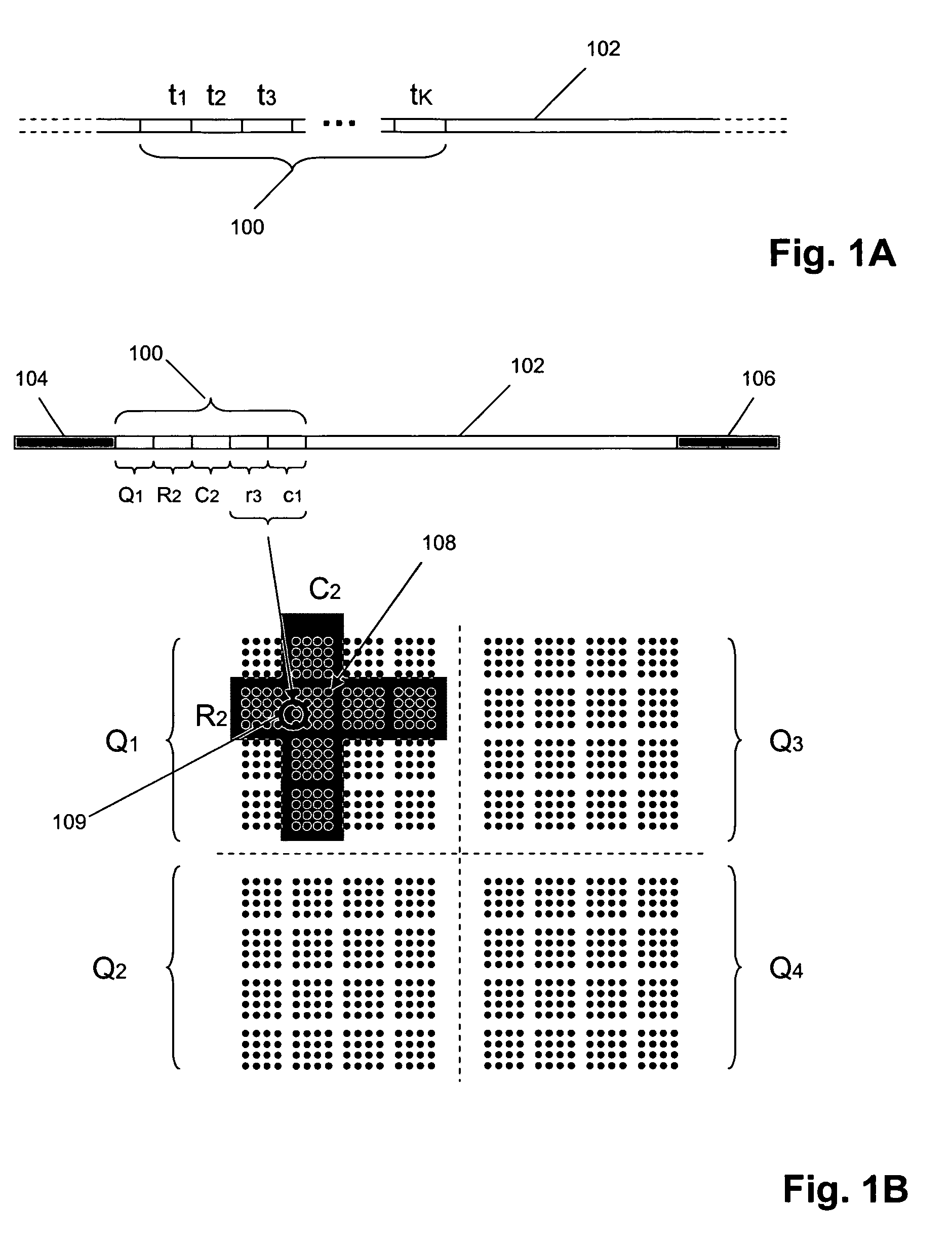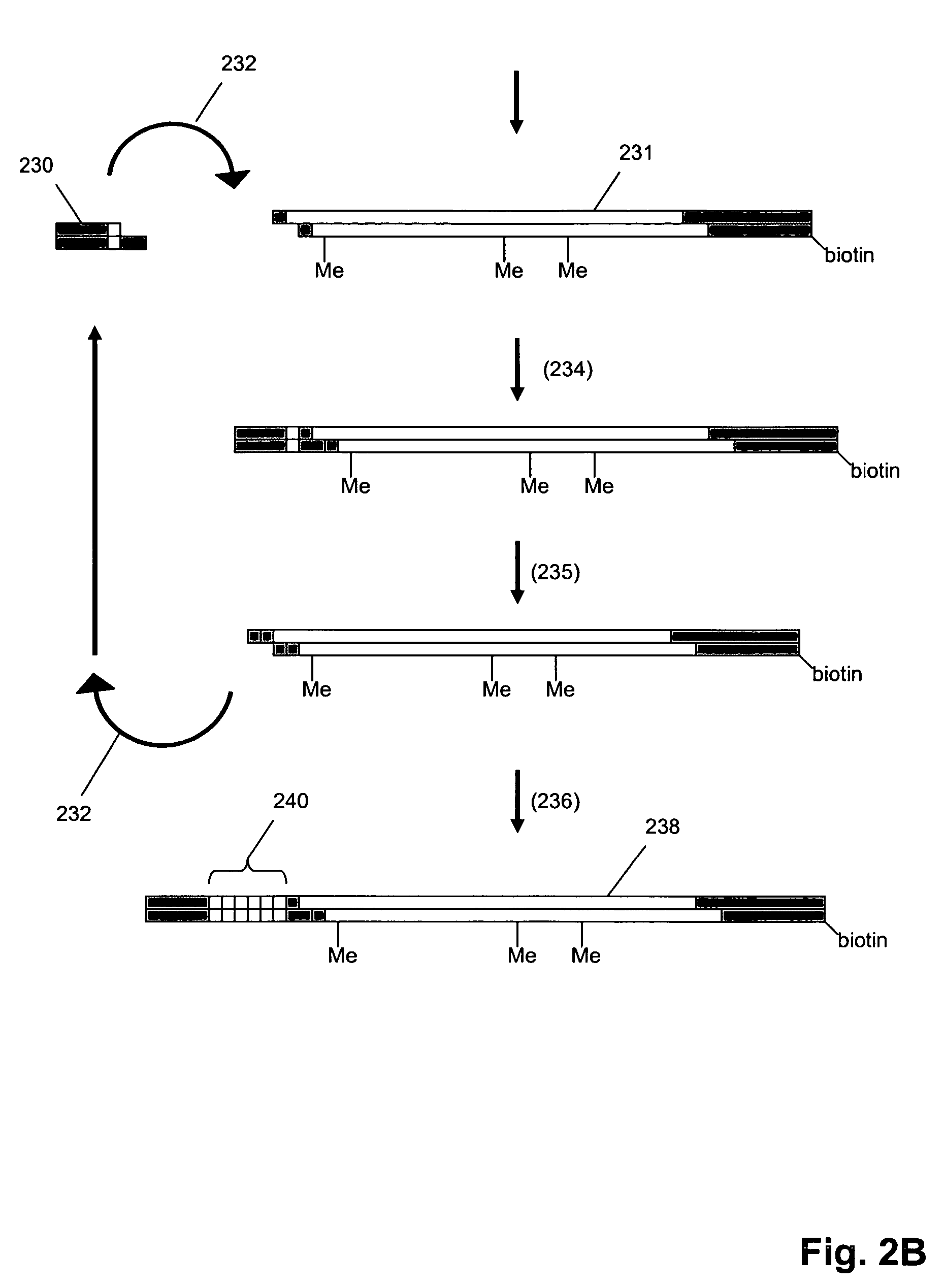Methods and compositions for tagging and identifying polynucleotides
a polynucleotide and labeling technology, applied in the field of methods and compositions for identifying polynucleotides, can solve the problems of low cost of attaching tags, high initial cost of synthesizing and separately labeling analytes or probes,
- Summary
- Abstract
- Description
- Claims
- Application Information
AI Technical Summary
Benefits of technology
Problems solved by technology
Method used
Image
Examples
Embodiment Construction
[0036]The invention provides methods and compositions for attaching oligonucleotide tags to polynucleotides for the purpose of carrying out analytical assays in parallel and for decoding the oligonucleotide tags of polynucleotides selected in such assays. Exemplary analytical assays where tagged polynucleotides are selected include genotyping assays, such as disclosed in the following references that are incorporated by references: Brenner, PCT patent publication WO 2005 / 026686; Willis et al, U.S. Pat. No. 6,858,412; Fan et al, U.S. patent publication 2005 / 0074787; Schouten, U.S. patent publication 2003 / 0108913; and the like. Selection of a tagged polynucleotide may be based on specific hybridization and differential duplex stability, template-driven ligation, template-driven strand extension, exonuclease digestion (e.g. of non-circularized probes), or the like.
[0037]In one aspect, as illustrated in FIG. 1A, oligonucleotide tags (100) of the invention are concatenates of a plurality...
PUM
| Property | Measurement | Unit |
|---|---|---|
| melting temperatures | aaaaa | aaaaa |
| temperature | aaaaa | aaaaa |
| temperature | aaaaa | aaaaa |
Abstract
Description
Claims
Application Information
 Login to View More
Login to View More - R&D
- Intellectual Property
- Life Sciences
- Materials
- Tech Scout
- Unparalleled Data Quality
- Higher Quality Content
- 60% Fewer Hallucinations
Browse by: Latest US Patents, China's latest patents, Technical Efficacy Thesaurus, Application Domain, Technology Topic, Popular Technical Reports.
© 2025 PatSnap. All rights reserved.Legal|Privacy policy|Modern Slavery Act Transparency Statement|Sitemap|About US| Contact US: help@patsnap.com



